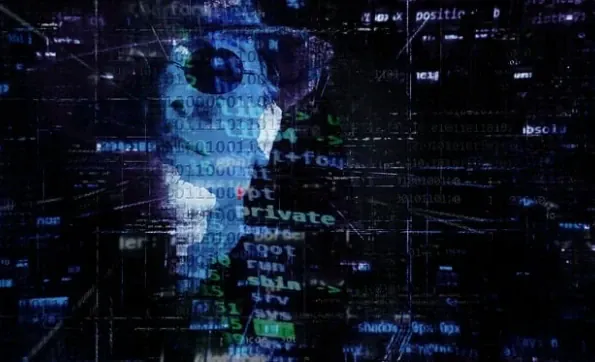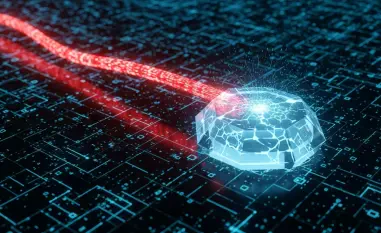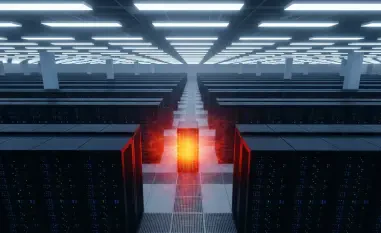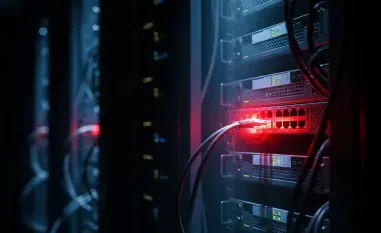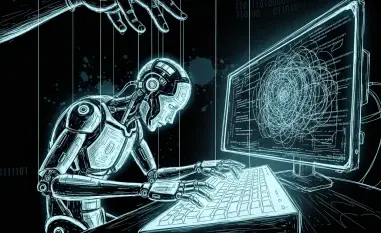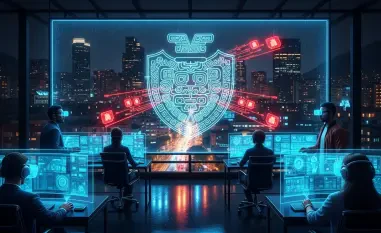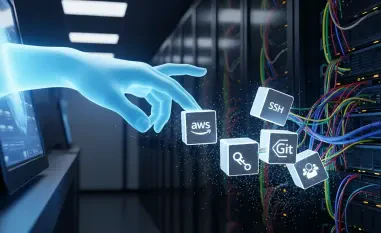The cybersecurity landscape is rapidly evolving, with artificial intelligence (AI) playing a transformative role in both enhancing defenses and escalating threats. As we look ahead to 2025, the increasing sophistication and frequency of cyberattacks necessitate a proactive and comprehensive approach to safeguarding digital assets. This article delves into key trends, the transformation of ransomware tactics, AI-driven cyber threats, vulnerabilities in critical infrastructure, the rise of supply chain attacks, and the pressing issue of the cybersecurity talent gap.
The Evolution of Ransomware Tactics
Ransomware attacks have historically focused on data encryption and extortion, compelling organizations to pay hefty sums to regain access to their information. However, a significant evolution in ransomware tactics is anticipated by 2025, shifting from mere data encryption to corrupting and manipulating critical data. This shift presents dire consequences, potentially wreaking havoc on entire industries. The implications of such attacks are manifold; altering medical records in hospitals or financial data in multinational banks could lead to devastating outcomes. Beyond monetary losses, these attacks erode institutional trust, jeopardizing public safety and economic stability.
Cybersecurity experts have long warned of the potential for ransomware to evolve beyond simple encryption. The forthcoming transformation will see malicious actors targeting the integrity of sensitive data, leading to not just operational disruptions, but also massive credibility crises for affected institutions. Imagine a scenario where medical histories are altered, leading to incorrect diagnoses and treatment plans—such consequences extend far beyond the digital realm, impacting human lives directly. Likewise, financial institutions face catastrophic risks if ledger entries are manipulated, potentially leading to fraudulent transactions on a vast scale. This evolution in ransomware tactics underscores the need for a proactive and deep-rooted defense strategy that goes beyond conventional data protection measures.
AI-Driven Cyber Threats
As AI becomes integral to various industries, it simultaneously revolutionizes cybercrime. Adversaries are increasingly leveraging AI to launch highly targeted phishing campaigns, develop sophisticated malware, and identify system vulnerabilities with unparalleled speed. The ability of AI to scale attacks and outpace human defenses poses a formidable challenge to cybersecurity professionals. One of the most concerning aspects of AI-driven threats is the use of deepfake audio and video to bypass identity verification and spread misinformation.
Deepfakes exploit AI’s potential to create almost indistinguishable alterations of existing media, which can be used maliciously to impersonate individuals or manipulate public opinion. Fraudsters can employ these techniques to bypass stringent security measures in corporate and personal environments by creating convincing fakes of voices or even video appearances. Moreover, AI-driven malware can adapt and change its behavior to evade traditional detection mechanisms, rendering conventional antivirus software inadequate. A significant advance in AI cybersecurity technology is required to counter these sophisticated threats. For example, AI-driven defenses must constantly learn and adapt in real-time to detect malicious activities and preemptively neutralize threats before causing damage.
Vulnerability of Critical Infrastructure
The vulnerability of critical infrastructure is a significant concern as we approach 2025. Past incidents where energy grids and water systems were targeted highlight the potential for such attacks to become more prevalent. These attacks are often aimed at maximizing chaos with minimal effort, posing severe risks to national security and public welfare. Aging and fragmented security protocols of essential infrastructure systems, compounded by the increasing interconnectivity of operational technology (OT) and information technology (IT), amplify these risks.
Viewing industrial cybersecurity as a matter of safety, not just security, is crucial. The integration of OT and IT systems creates an interconnected environment where a vulnerability in one system could have cascading effects across other sectors. Protecting these critical infrastructures requires prioritizing resources and adopting a multi-faceted security strategy. This includes not only employing advanced technology to detect and mitigate cyber threats but also ensuring that security measures are robustly integrated into the design and maintenance of industrial systems. Regular assessments and updates of security protocols, along with continuous monitoring for anomalous activities, are essential steps in fortifying the cyber defenses of critical infrastructure.
Escalation of Supply Chain Attacks
The interconnected nature of global business creates fertile ground for supply chain breaches, which exploit vulnerabilities in third-party vendors to infiltrate multiple organizations. The frequency and sophistication of supply chain attacks are expected to increase in 2025, posing significant challenges to cybersecurity. High-profile incidents like the SolarWinds and Kaseya attacks exemplify how small vendors can serve as gateways to larger enterprises. These breaches underscore the profound impact malicious actors can have by targeting indirectly connected systems.
Organizations must implement rigorous security audits of their third-party vendors, ensuring compliance with up-to-date security standards. Employing zero-trust principles is essential, as trust in vendors should be minimal unless thoroughly verified. Threat intelligence and proactive identification of supply chain vulnerabilities are also critical. By leveraging advanced analytics and continuous monitoring of vendor networks, organizations can detect suspicious activities early and implement necessary countermeasures. Furthermore, fostering strong collaboration and communication between businesses and their supply chain partners can enhance overall security, creating a more resilient defense against sophisticated supply chain attacks.
Addressing the Cybersecurity Talent Gap
The growing shortage of skilled cybersecurity professionals is an overarching trend that poses a significant challenge to the industry. With over 3.4 million unfilled positions globally projected to increase by 2025, this shortfall exacerbates the ability of organizations to defend against sophisticated cyber threats. Overburdened teams and higher turnover rates are common consequences of this talent gap, necessitating innovative solutions to attract and retain skilled workers.
Organizations must invest in robust training and mentorship programs to cultivate a pipeline of cybersecurity talent. Partnering with educational institutions to develop specialized curricula and offering internships can bridge the skill gap by equipping new graduates with practical experience. Embracing diversity initiatives is equally important, as diverse teams bring varied perspectives and innovative solutions to complex problems. Additionally, leveraging automation and AI for routine tasks can free human analysts to focus on strategic decision-making and threat intelligence. By empowering the workforce and integrating advanced technologies, organizations can enhance their cybersecurity resilience and mitigate the talent shortage effectively.
Adopting a Multilayered Approach to Cybersecurity
The cybersecurity landscape is swiftly changing, with artificial intelligence (AI) significantly impacting both defense mechanisms and the nature of cyber threats. As we move toward 2025, the growing complexity and frequency of cyberattacks demand a proactive, multifaceted strategy to protect digital assets. This article explores essential trends, the evolution of ransomware tactics, AI-driven threats, vulnerabilities in critical infrastructure, the increase in supply chain attacks, and the urgent issue of the cybersecurity talent shortage.
Ransomware tactics have become more advanced, shifting from simple data encryption to double extortion, where attackers threaten to release compromised data if ransoms aren’t paid. AI is both a tool for defenders and a weapon for attackers, capable of identifying vulnerabilities and launching sophisticated attacks at unprecedented speeds. Critical infrastructure, such as power grids and water systems, remains highly vulnerable to cyberattacks, with potentially catastrophic consequences.
Supply chain attacks are on the rise, with cybercriminals targeting third-party vendors to exploit weak links and infiltrate larger networks. This highlights the need for companies to extend their cybersecurity efforts beyond their own systems. Furthermore, the industry faces a significant talent gap, with a shortage of skilled professionals to counter these growing threats, necessitating investments in education and training to build a robust cybersecurity workforce.
